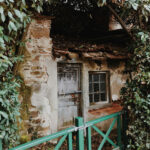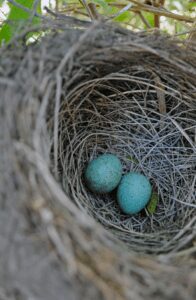Ecology Quarterly: Summer Edition
Welcome to Ecology Quarterly, where we share the latest insights, news, and research from the world of ecology for the built environment.
Now that we’re past the Summer Solstice and this season is here in all its glory, we’ll be taking a look at the highlights. Our Ecology Quarterly Summer Edition will cover the key recommendations on changes in the latest Biodiversity Net Gain (BNG) metric, carrying out bat surveys, implementing changes regarding nutrient neutrality, and nesting birds.
Updates to the BNG Metric - 3.1
Eight Versa explore BNG and the Environment Bill, and how they are designed to provide all interested parties with a means of assessing changes in biodiversity value (losses or gains) brought through development or land management changes. Since then, an update was published in April 2022 which includes key adaptations to the regulation of modified grassland, rivers, and streams. On modified grassland it is now necessary for between 6-8 species/m2 for moderate and good condition – so, most assessed will now be of a poor condition. Furthermore, rivers and streams must account for and assess redline boundaries that lie within 10m of the top of bank of a watercourse. These changes will impact many developers and landowners when building on agricultural grassland and watercourses. It will be required under planning and councils will enforce this.
To find out more, we will be hosting a webinar session on Wednesday 20 July, 13:00 – 14:00 on Biodiversity Net Gains and Rewards. In this session you will learn more about the ins and outs of BNG which includes policy and legislations requirements, and how to maximise the gains and use them to add commercial value. You can register here.
Survey Highlight: Bats
It is currently the core bat survey season in the UK and to prevent delays at planning, it is important for developers and householders alike to consider the presence of bats during this period, to prevent having to wait until next survey season to carry out surveys.
The first step is to undertake a Preliminary Roost Assessment (PRA) to determine whether further surveys are required. This can be carried out at any time of year however to ensure further surveys, if required, can be carried out this year, it is important to act now.
Once a PRA has been carried out, one of the following may be recommended:

1. Emergence/Re-entry Surveys
Determine the presence of bat roosts in buildings and trees following identification of suitable features recorded during the PRA. These surveys can be undertaken between May and August (the core bat survey season) and, in some cases, into September for the final survey. This type of survey is commonly needed for applications ranging in size, from householder extensions to larger infrastructure projects.

2. Bat Activity Surveys

3. Maternity Roost Surveys
The Bat Conservation Trust (BCT) is currently reviewing and updating the Good Practice Guidelines, now expected to be released later in 2022. However, an Interim Guidance Note has provided clarification regarding the role of night vision, infrared, and thermal imaging camera (night vision aids or NVAs) in bat emergence surveys.
Eight Versa continue to invest in technology, keep up to date with evolving industry guidance, and apply robust approaches to ensure our services are of the highest quality to clients. Eight Versa’s ecology team’s calendar is quickly filling up, so book surveys in sooner rather than later to guarantee our services.
Nutrient Neutrality


Survey Highlight: Nesting Birds
In the UK, March to August inclusive is considered the active period for nesting birds, however a number of species can nest outside of this period. A nest is considered active and subsequently protected by legislation from the moment it is being built until the chicks have fledged.
To avoid triggering legislation, it is recommended to either avoid clearance of vegetation from March to August or if this is unavoidable, have a suitably qualified ecologist on site within 24 hours prior (although ideally immediately before) clearance of vegetation to confirm the presence/absence of nesting birds. If birds are found to be nesting, works in the area around the nest should be delayed until after the young have fledged as confirmed by the ecologist.





